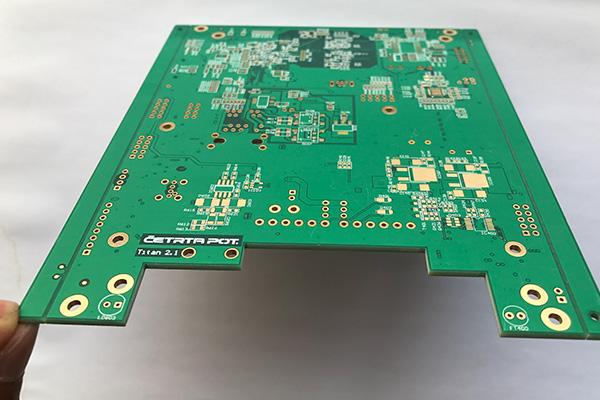The concept of impedance control is ignored by many PCB designers. In high-frequency circuits, PCB design and impedance matching are particularly important, as described below one by one:
Then question 1: How does the impedance of the impedance line change with the reference layer?
After the reference layer is removed, the distributed capacitance C decreases, L increases, and Z increases. And because of the removal of the reference layer, electromagnetic interference increases, because the E/H field lines lose the limit of the reference layer. The impact on the circuit is that the isolation becomes worse, the impedance is> 50 ohms, and the mismatch is serious.

Then question 2: How stable is the impedance control of the impedance line with fewer turns during PCB production?
Fewer turns is not to control stability, because the error of the process is certain, and the error of etching the metal copper wire remains unchanged. It is because every turn will cause a small change in impedance Z, more turns will increase the loss, and the mismatch will also increase. Therefore, in high-frequency applications, the traces should be as short as possible, and the conversion of trace layers should be reduced. Each time a signal passes through a via, it will cause loss and mismatch. Signal chaotic movement can also cause resonance and excite the higher-order modes of the coplanar waveguide, which further leads to signal loss. If turning is unavoidable, try to use the following wiring methods to reduce loss.
The turning line on the PCB board is designed to solve the signal delay problem caused by the unequal wiring distance of each pin of the chip (for high-speed circuits). The length and the number of turns are determined by the results of precise calculations and are not random.
PCB board 3240 epoxy board and two types of epoxy boards are commonly used in the market. Everyone says FR4 is better than 3240. What is the difference between them?

Difference 1: FR4 has good flame retardant performance.
FR4 is an improved product of 3240 epoxy board. The flame retardant performance of FR4 epoxy board meets the national UL94V-0 standard. 3240 epoxy board has no flame retardant properties.
Difference 2: Translucent color.
The color of FR4 is very natural, a bit jade, and the color of 3240 epoxy board is a bit blinking. It doesn't look very natural. Most of the colors are not very uniform.
Difference 3: FR4 is non-radiation and environmentally friendly.
3240 epoxy board is halogen-containing, which is not very environmentally friendly to the environment and the human body. It also does not conform to the country's green sustainable development strategy. The FR4 epoxy board is just the opposite.
Difference 4: FR4 has good dimensional stability.
The dimensional stability of FR4 is better than that of 3240, and during the pressing process, the thickness tolerance of FR4 is also much better than that of 3240, which is more suitable for processing.
Difference five: FR4 can self-extinguish from the fire.
FR4 can be naturally extinguished in the event of a fire.
Difference six: low water absorption.
Its water absorption (D-24/23, plate thickness 1.6mm): ≤19mg, which provides a good help for its use in wet transformers and other equipment.
Because FR-4 epoxy board has good performance, it is now a material for insulating parts in the electrical and electronic industries. Of course, 3240 epoxy board still has a certain market due to its price advantage.